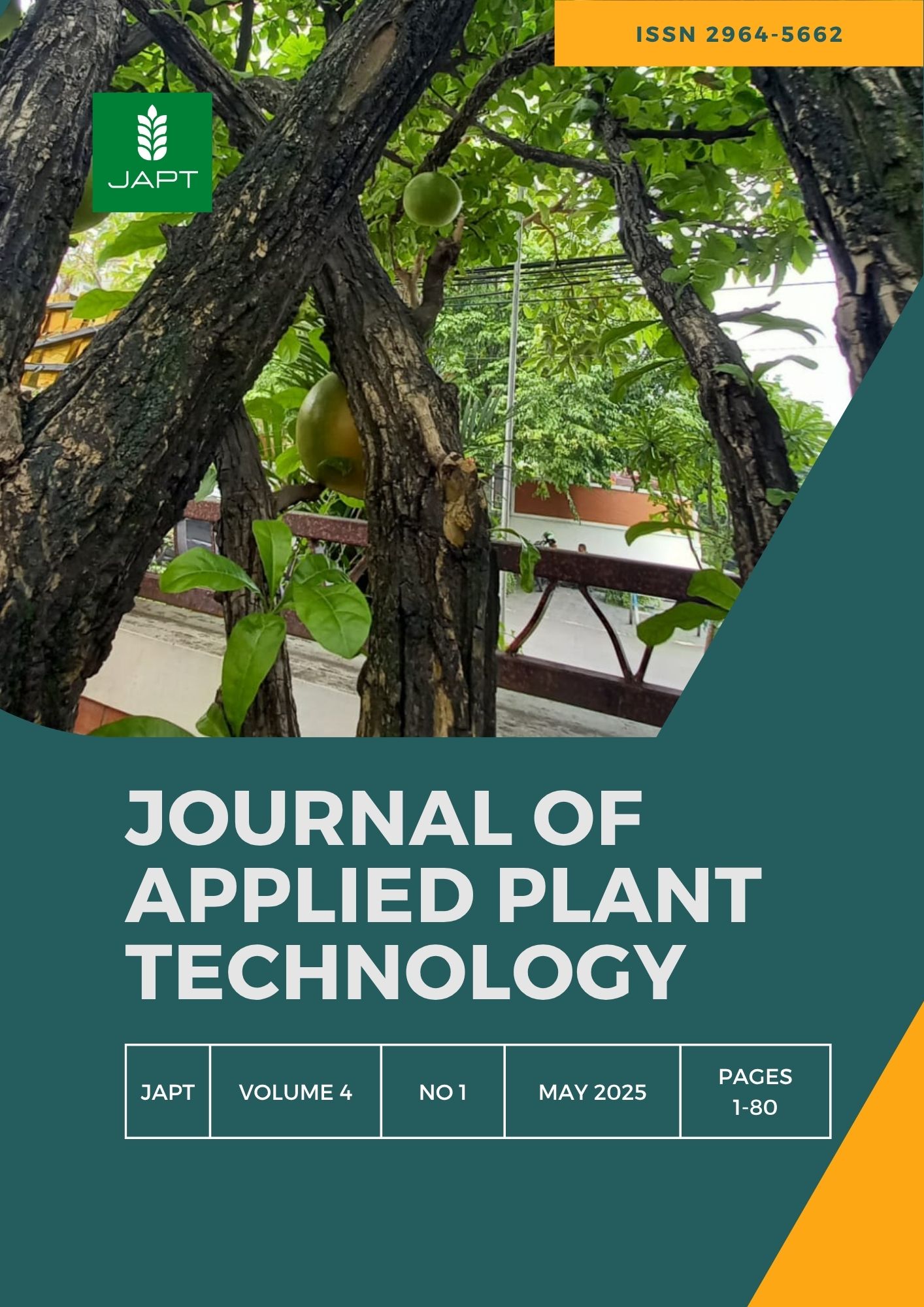Growth Response and Yield of Pagoda Mustroper Plants (Brassica rapa Subsp. Narinosa) Verticulture by Effect of Planting Media Composition and Concentration of Tough Liquid Waste
DOI:
https://doi.org/10.30742/a116fx23Keywords:
pagoda mustard, verticulture, liquid organic fertilizer, tofu wastewater, planting mediaAbstract
This study aimed to analyze the effect of planting media composition and liquid organic fertilizer (LOF) concentration from tofu wastewater on the growth and yield of pagoda mustard greens using the verticulture method. The research was conducted in Gunung Sekar, Sampang, East Java, from December 2023 to February 2024. A factorial Randomized Complete Block Design (RCBD) was used with two factors and three replications. The first factor was planting media composition (soil, compost, goat manure) in four ratios: M0 (1:1:1), M1 (1:1:2), M2 (1:2:3), and M3 (2:1:1). The second factor was LOF concentration (0%, 10%, 20%, 30%). Data were analyzed using ANOVA and followed by the Honestly Significant Difference (HSD) test at a 5% significance level. Results showed that the combination of soil+compost+goat manure (1:1:2) with 10% LOF produced the highest fresh weight. Quadratic regression analysis revealed the relationship between tofu wastewater concentration and plant weight (Y = -112.5x² + 29.028x + 23.903, R² = 0.905), with an optimal concentration of 13%.
Downloads
Published
Issue
Section
License
Copyright (c) 2025 Fitriyatush Shalihah, Ramdan Hidayat, Agus Sulistyono

This work is licensed under a Creative Commons Attribution-ShareAlike 4.0 International License.









